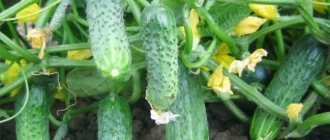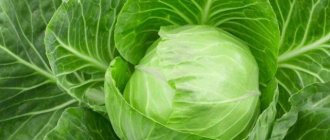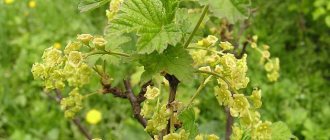The Phoenix cucumber variety is one of the most common varieties. It was popular back in Soviet times. Work on its breeding was carried out at the Crimean Experimental Breeding Station (Krasnodar Territory, Krymsk) of the Federal Research Center of the All-Russian Institute of Plant Genetic Resources (branch of the Crimean OSS VIR).
Cucumber varieties are well adapted to the climatic conditions of individual regions and are intended for cultivation in open ground
During testing, the variety was designated as “640”, and after an epidemic of downy mildew, which it survived safely (the only one of all experimental cucumbers), it received its own name “Phoenix”. Under this name, the variety was registered in the State Register in 1993 as approved for cultivation in open ground in the Central Black Earth, North Caucasus, and Lower Volga regions and intended for commercial production.
“Phoenix” is the first of the cucumbers developed at the Crimean OSS that is resistant to downy mildew. Continuing the tradition, many of the subsequent varieties and hybrids also received “bird” names: “Chizhik”, “Swift F1”, “Golubchik F1”, etc.
Over the past years, this variety has earned great popularity among amateur vegetable growers and farm owners in the south of Russia and Ukraine.
Packages with seeds of varieties from different manufacturers
Many manufacturers indicate on seed packages the encoding “640” assigned to it in the name of the variety.
In addition to the high resistance of the variety to downy mildew, “Phoenix” has other advantages:
| Characteristic | Description |
| Late ripening | Fruiting begins on the 55-65th day after full germination and lasts until frost |
| Harvest | Maximum up to 5 kg/m2 in open ground |
| Salad | Cucumbers with high taste, medium length, are intended primarily for fresh consumption. Many also use them for pickling and preservation. |
| Hardy | Resistant to common diseases and adverse weather conditions |
Let us now consider in detail the characteristics and differences of this variety.
Description of the variety
Many vegetable growers value Phoenix cucumbers very much. The description of the variety looks really attractive. The variety is considered a salad variety, but retains its properties well when salted and pickled. Thanks to this, they are always in demand. This variety can be considered profitable from a sales point of view.
In terms of labor-intensive breeding, the variety can also be called convenient. “Phoenix” is well resistant to different temperatures, does not succumb to sudden “whims” of the weather, and most importantly, it is practically not susceptible to diseases and is not afraid of pests.
The only thing that needs to be taken into account when breeding this variety is that it is very moisture-loving. Insufficient watering can lead to unwanted bitterness in the taste of the fruit and the entire harvest will be spoiled.
Productivity and ripening time
This variety can be considered very profitable for breeding because it is high-yielding. Cucumber yield rate per 1 sq. meter - 5 kg. In this case, it is necessary to maintain an optimal level of humidity and regularly fertilize the soil.
This variety cannot be called quickly ripening - in order to gain all those properties for which it is so loved by everyone, it needs time. Most often this is about a month and a half (up to 45 days).
Variety varieties
The most famous subspecies of the variety is considered to be Phoenix Plus cucumbers. They are distinguished by the fact that they are smaller fruits - up to 12 cm, weighing up to 70 grams. In addition, the ripening period for the fruits of this variety is on average 10 days longer.
The love of vegetable growers for this variety and the attention of consumers is largely due to its size. If we compare these two varieties visually, Phoenix Plus has smaller courses and produces fewer fruits. To get the same yield as with the Phoenix variety, you will need to take up more space in your garden.
"Phoenix Plus" is more convenient for salting and marinating due to its small size. The taste qualities are not fundamentally different.
Growing
Growing Phoenix cucumbers is not particularly different from other varieties. They were bred as dirt breeds. Seeds can be planted directly in open ground or pre-grown seedlings.
Planting in the ground occurs at the end of May - beginning of June, when positive average daily temperatures are established and the threat of a return of May frosts has passed. The soil temperature should be more than +15 degrees. At first, while night temperatures are quite low, use arcs over which you pull the covering material.
If you decide to grow cucumber seedlings, then take care of planting them in early May. Plants are best planted in open ground when they have 2-3 true leaves. At the end of May, plant the plants in open ground.
You can refuse covering material when daytime temperatures are at least +22 degrees, and night temperatures are +16 degrees. At lower temperatures, plants stop growing, so a backup heat-containing cover material is needed.
Before planting, prepare the soil, apply rotted manure, and dig up.
Advice! The ideal option is to prepare the land in the fall. When the ground is dug up, weeds are removed and fresh manure is added, which will rot over the winter and turn into a form suitable for absorption by plants.
Cucumbers love light, porous soil composition. They do not like heavy clay soils that are prone to moisture stagnation. There is a way out: the composition of the soil is improved by adding humus, sand, and peat. The methods are not costly, but will allow you to significantly improve your harvest.
Important! Maintain crop rotation. Plant cucumbers after potatoes, tomatoes, and legumes.
The Phoenix variety grows best when following a 50x40 cm pattern when planted in a row or in a staggered manner. Phoenix plus cucumbers will save you a little space; their planting pattern is 40x40 cm.
Before planting, soak Phoenix cucumber seeds in a weak solution of potassium permanganate. After planting the seeds, cover the bed with plastic wrap.
The Phoenix variety is one of those varieties that are “planted and forgotten.” But with proper regular care, the plants will thank you with a bountiful harvest. Don't forget that cucumbers are 90% water, so they just need regular watering. Water as the top layer of soil dries, more often on dry days; it is better to water with water that has warmed up during the day in the evening to avoid burning the leaves.
Advice! If you do not have the opportunity to water the plants frequently, then use mulching of the soil with various materials. Mulch protects against excessive moisture loss.
Phoenix cucumbers love regular fertilizing and respond with rapid growth and fruiting. Combine fertilizing with mineral and organic fertilizers. An infusion of bird droppings, manure or plants stimulates the formation of green mass. Fertilizing with mineral fertilizers promotes fruit formation. You can use ready-made mineral mixtures for feeding cucumbers, for example, Kemira-Lux, which will prepare the plant for the fruiting period. The fertilizer has been tested by gardeners, the plants become strong and hardy, the yield increases by 30%.
The Phoenix variety gives an increased yield if the plant is tied up and formed into a cucumber bush. You can pinch the main stem, which will result in additional lateral branching of the plant.
Harvest fruits after 1-2 days. Cucumbers quickly outgrow and lose their taste. In addition, they absorb moisture and nutrients, which are so necessary for flowering and the formation of ovaries. For tips on growing cucumbers, watch the video:
How to prepare seeds
If the seeds were bought in a store, they must be disinfected. To do this, you need to use a solution of potassium permanganate.
You can collect the seeds yourself from the fruits. An average of 10 seeds can be obtained from one fruit. But before planting they need to be processed. To do this you will need a saline solution. To prepare, such seeds need to be left in it for a day.
Before planting, it is necessary to take into account that seeds collected independently take longer to germinate after planting.
Planting Tips
It is necessary to plant seedlings of this variety in warm soil when the temperature outside is at least 18 degrees Celsius. The ideal time for this is the second half of the day, when the sun acts more gently on the plants.
If you are not sure that the seedlings are “ripe” for planting, strengthen the planting site with nitrogen fertilizer.
Features of care
The Phoenix cucumber variety has its own specific conditions for care and maintenance. The main ones:
- frequent watering: always with warm water
- nutrition: feeding the plant with ordinary manure can be considered the main care; mineral fertilizers are also often used
- formation of a curl: it is necessary to tie up branches that are “curly” so that they do not interfere with the development of the entire plant
Advantages and disadvantages of the Phoenix cucumber variety in comparison with other varieties
The main advantages of Phoenix cucumbers include:
- drought resistance;
- good yield;
- high resistance to most diseases;
- not only seedlings grown at home, but also seeds are planted in open ground;
- versatility of the harvested crop;
- long fruiting period;
- Even if the watering regime is not followed, the cucumbers do not become bitter.
An interesting video about the rules for planting cucumbers:
The variety has no serious disadvantages, but some negative aspects of Phoenix cucumbers should still be noted:
- it should only be grown in those regions for which it is zoned;
- in order to attract more bees to the plant’s lashes, it is recommended to plant honey-bearing flowers (marigolds and some other plants) nearby;
- cultivation requires a sunny place, since in the shade the yield of this vegetable crop decreases sharply;
- this late-ripening variety begins to bear fruit when most early-ripening cucumbers already produce several harvests.
But despite its shortcomings, the Phoenix variety is grown by many vegetable growers who plant several varieties of cucumbers with different ripening periods. Therefore, such summer residents will have fresh cucumbers on the table throughout the entire season until frost.
Do you need a greenhouse?
The Phoenix variety is not considered a greenhouse variety. If temperature conditions do not allow growing this variety, then it is better to choose a less demanding one for the greenhouse.
Difficulties you may encounter when growing in a greenhouse:
- In order for the plant to be pollinated, male flowers must be replanted.
- stable temperature required
- it is necessary to control air humidity
- it is necessary to constantly monitor the formation of the course
History of variety development and place of zoning
This cucumber variety was bred several decades ago, or more precisely, in the early 80s of the last century by breeder A.V. Medvedev in the city of Krymsk. Initially, it was given the name Variety 640. But later, an epidemic of downy mildew occurred across Russia, and as a result, many varieties of this vegetable crop suffered and died. However, Sort 640 was not even affected by this dangerous disease. And as a result, it was given the name Phoenix.
Therefore, you need to remember when choosing seed material that Phoenix and Phoenix 640 are the same variety of cucumbers. There is also the Phoenix Plus variety, a description of which is given at the end of the article.
The variety is zoned for cultivation in the following regions:
- Central Black Earth;
- Middle lane;
- Southern regions and Crimea;
- In the Lower and Middle Volga region;
- In the Caucasus.
Possible diseases and pests
Despite the fact that this variety is immune to the most terrible diseases that vegetables are usually susceptible to, the threat still exists.
Among the diseases, these can be: gray and root rot, bacteriosis. All these are fungal diseases. To avoid them, when planting, leave enough space between the beds, avoid excess moisture and regularly inspect the plants.
The mole cricket can become a big threat to this variety. Aphids are also dangerous. Because of these pests, the entire crop can be lost.
Over the past 30 years, this variety has become widespread and the Phoenix cucumber is grown almost throughout the CIS. The characteristics and description of the variety make it possible to verify that it is worth the attention of vegetable growers. Of course, most often it can be found on farms located in the southern regions.
But the long shelf life of the fruit allows it to withstand transportation well to more northern regions and reach the consumer’s table in ideal form. This variety is valued for its fresh taste and the ability to retain its taste after salting and pickling.
Cucumbers of this variety “from a jar” will be as crispy and juicy as fresh. They are practically not deformed and look perfect when they appear on the plate. A real decoration for every feast!
Planting and caring for Phoenix cucumbers
Phoenix cucumbers are a late-ripening variety for open ground. To get a harvest of greens by the end of July, seeds are sown on the ridges at the end of May. To obtain an earlier harvest, they practice growing plants through seedlings.
Attention! When growing cucumber seedlings, you must go through all the standard procedures recommended for vegetable crops.
Considering that cucumber seedlings tolerate transplantation very poorly, it is recommended to grow seedlings in peat cups with a volume of 300-400 ml. The soil for sowing seeds should be light and nutritious. As a rule, it consists of turf soil, compost, humus and sand. To prevent the occurrence of fungal diseases, the soil for growing cucumbers must be disinfected by any available method. The most common methods include: pouring with hot water, steaming or heating in the oven, and using various chemicals.
After cooling, mix the soil well again and fill the cups 1-1.5 cm below the top edge.
Phoenix cucumber seeds also need disinfection. To do this, they are kept for 20 minutes in a solution of potassium permanganate, washed and placed for another 20 minutes in a solution with aloe juice, which is a natural growth stimulant.










